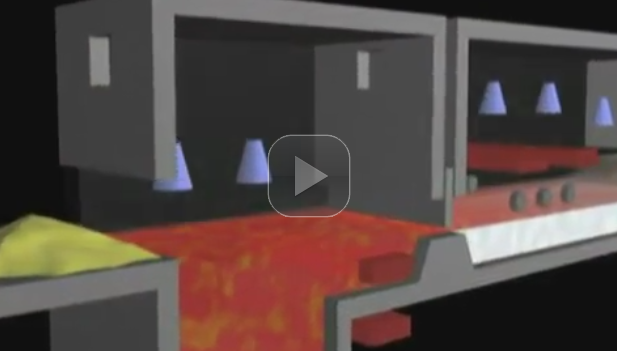Vitro Architectural Glass (formerly PPG glass) manufactures a variety of low-e coated glasses using two different manufacturing processes. The following table identifies the Vitro glass product and associated manufacturing process.
| Vitro Low-E Coated Glass Products |
| Product |
Manufacturing Process |
| Sungate® 400 Coated Glass |
MSVD |
| Solarban® Z50 Coated Glass |
MSVD |
| Solarban® 60 Coated Glass |
MSVD |
| Solarban® 67 Coated Glass |
MSVD |
| Solarban® 70XL Coated Glass |
MSVD |
| Solarban® 72 Coated Glass |
MSVD |
| Solarban® R100 Coated Glass |
MSVD |
In the pyrolytic manufacturing process, the coating is applied to the glass ribbon while it is being produced on the float line and the coating then “fuses” to the hot glass surface. The glass is then cut into stock sheets of various sizes for shipment to fabricators. For pyrolytic coatings, Sungate® 500 and 600 coatings are very durable, both mechanically and chemically. And, while Sungate® 500 and 600 coated glasses offer reduced emissivity and some solar control, they do not perform quite as well as Magnetic Sputtering Vapor Deposition (MSVD) by Vitro Glass.
In the MSVD process, the coating is applied to pre-cut glass (usually in stock sheets for further fabrication) in a vacuum chamber at ambient plant temperatures. MSVD coatings such as Sungate® 400 and Solarban® 60 low-e glasses offer lower emissivity and superior solar control versus pyrolytic. However, MSVD coatings are not as durable as pyrolytic coatings, either mechanically or chemically, and must always be used as a component of an insulating glass unit with the coating located within the sealed airspace.






